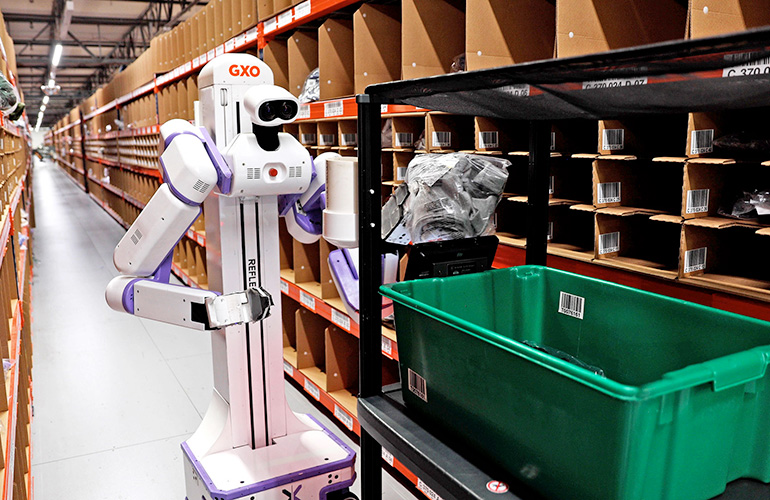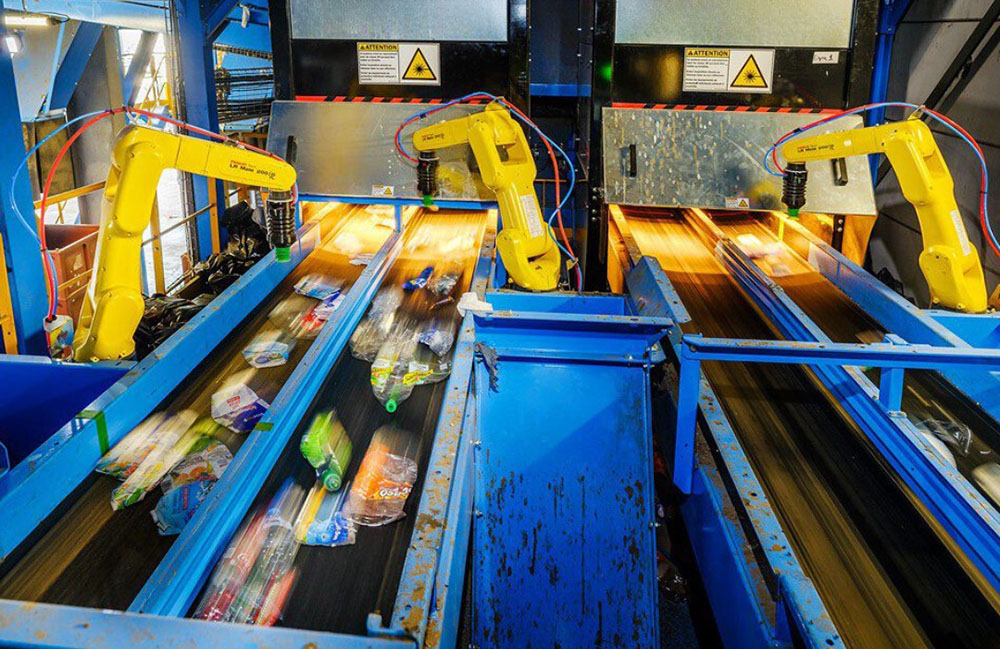By Mike Oitzman | September 20, 2024

Through the GXO Incubation Program, the 3PL is testing the Reflex humanoid on the warehouse floor. | Credit: GXO Logistics
GXO Logistics Inc. this week announced a new agreement with Reflex Robotics to pilot Reflex’s “general-purpose” robot for deployment into live operations.
Adrian Stoch, chief automation officer of GXO, told The Robot Report that the company is currently in the early stages of trials and pilots with the Reflex robots. GXO is exploring using them for tasks such as disposal of empty cartons, which involves removing corrugated materials from conveyors or collaborative robots.
“We’re pleased to partner with Reflex to develop applications for its Reflex Robot across various tasks in our warehouses,” Stoch stated. “Through our operational incubator program, we are deploying cutting-edge technology solutions that create new value for our customers, for GXO, and our people.”
GXO’s trial with Reflex is the company’s second robotics-as-a-service (RaaS) agreement. The third-party logistics provider (3PL) has also tested humanoid robots including Agility Robotics’ Digit and Apptronik’s Apollo.
Reflex Robotics starts with teleoperation
Reflex Robotics described its system as “an out-of-the-box solution designed to reach operational capability within 60 minutes of deployment and ramps to fully autonomous by learning from human demonstrations over time.” The company claimed that the multi-purpose humanoid can transition between repetitive tasks, from tote transfers with other automated systems to product picking.
The Reflex robots are not yet fully autonomous and still require remote operation by employees. The company said this “human in the loop” deployment is core to its strategy to enable quicker deployments.
GXO is observing the flexibility and potential of the mobile manipulators, but they have more to accomplish before the deployment can be called 100% successful, said Stoch.
“We’re thrilled that GXO, the leading provider of automated logistics solutions, is partnering with us to further its strategy,” said Ritesh Ragavender, CEO of Reflex Robotics. “We’ve learned a lot from working on-site alongside the GXO team, and we’re rapidly accelerating our robot production to support use cases in shelf picking, order replenishment, and quality assurance.”
Founded in 2014 by MIT graduates with hardware experience from Telsa, Boston Dynamics, and Amazon, Reflex Robotics has offices in New York and San Francisco.
GXO program assesses robot partners
The GXO Logistics operational incubator program is designed to evaluate and collaborate with potential robotics partners. It follows a standardized process with specific criteria and checkpoints to assess potential partnerships, explained Stoch.
He noted that Reflex Robotics has been flexible and understands GXO’s operational needs. Through the program, the 3PL provides real-world operational scenarios and direct feedback from its employees to assist partners in tailoring their technology to meet business requirements.
For example, GXO’s feedback led to a commercial arrangement with Agility Robotics within five months, said Stoch. He emphasized the symbiotic nature of the program, with GXO offering operational expertise, and partners contributing innovative technologies.
With the Reflex Robot, GXO is co-developing an array of use cases across process paths through an omnichannel fulfillment pilot for a Fortune 100 retailer. The long-term objective of the agreement is to deploy the robot widely across GXO’s operations, easing capacity constraints and enabling team members to take on more fulfilling roles.
GXO, which claims to be “the world’s largest pure-play contract logistics provider,” has more than 130,000 team members across more than 970 facilities totaling approximately 200 million sq. ft. (18.5 million sq. m).

 3 months ago
51
3 months ago
51









 English (US) ·
English (US) ·